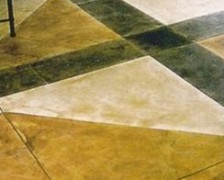Landlords, Is it Time to Change the Flooring in Your Rentals?
 When it comes to refunding security deposits, most landlords and tenants will squabble at some point over the flooring in the rental unit. Carpets get stained or wear out, hardwood is easily scratched, and vinyl flooring doesn’t always hold up to tenant wear-and-tear.
When it comes to refunding security deposits, most landlords and tenants will squabble at some point over the flooring in the rental unit. Carpets get stained or wear out, hardwood is easily scratched, and vinyl flooring doesn’t always hold up to tenant wear-and-tear.
What is the best flooring choice for rental units? And how do you decide whether it’s time to switch to something new in your investment properties?
Ask a dozen landlords those two questions, and you’ll likely get a dozen answers. One thing most agree on is that carpet, while it can be the most economical choice, will often give you the most headaches.
Why? Carpet stains and odors are notoriously difficult to remove. A tenant’s pet, cigarette smoke and food odors are absorbed into carpets and padding and can permeate the air in the rental unit—as well as the sub-flooring below. However, in higher-end rentals, tenants may expect nice carpeting—just make sure your security deposit covers damage repair. Landlords know ruined carpeting can occur at every rent point.
- Individual adhesive-backed vinyl tiles are the first choice of many landlords—for bathrooms, kitchens or even the entire unit. They are inexpensive, easy to install and easy to replace. Some landlords we’ve talked to prefer commercial-grade tiles over the less-costly home variety because they hold up better.
- Tenants love hardwood floors. They look fantastic and add value to your rental unit, so if you have hardwood floors, make sure you advertise that fact! But what about caring for them? For homes that are lived in for years, it’s not as large an issue as it is for rental units that might have furniture moved in, out and around every 12 months. Some floor refinishers will recommend a harder topcoat if you inform them it’s a rental unit. Still, tenants can find ways to scratch and gouge the floors. Ask tenants to use floor protectors on furniture legs.
Furniture moving hint: When sliding furniture across a floor, put a thick sock on each leg to make it easier—and save the floor.
- Consider painting the hardwood floor instead. Floor paint is tough and easy to apply yourself. It’s less expensive than refinishing the floors, and between tenants you can repaint it quickly. Make sure you allow it time to cure completely before allowing the new tenant to move furniture in.
- Finally, landlords are starting to use concrete floors more often. They are inexpensive and easy to maintain. In addition, concrete is extremely durable and can be stained or colored to look very attractive. The key to a great looking concrete floor is proper polishing. Keep in mind that concrete floors tend to be hard and cold. Some landlords limit their use to kitchens and bathrooms.
Every landlord must balance initial cost, maintenance requirements and lifespan of flooring options before deciding which way to go. What issues have you encountered when replacing flooring in rental units?

Add A Comment
You must be logged in to post a comment.